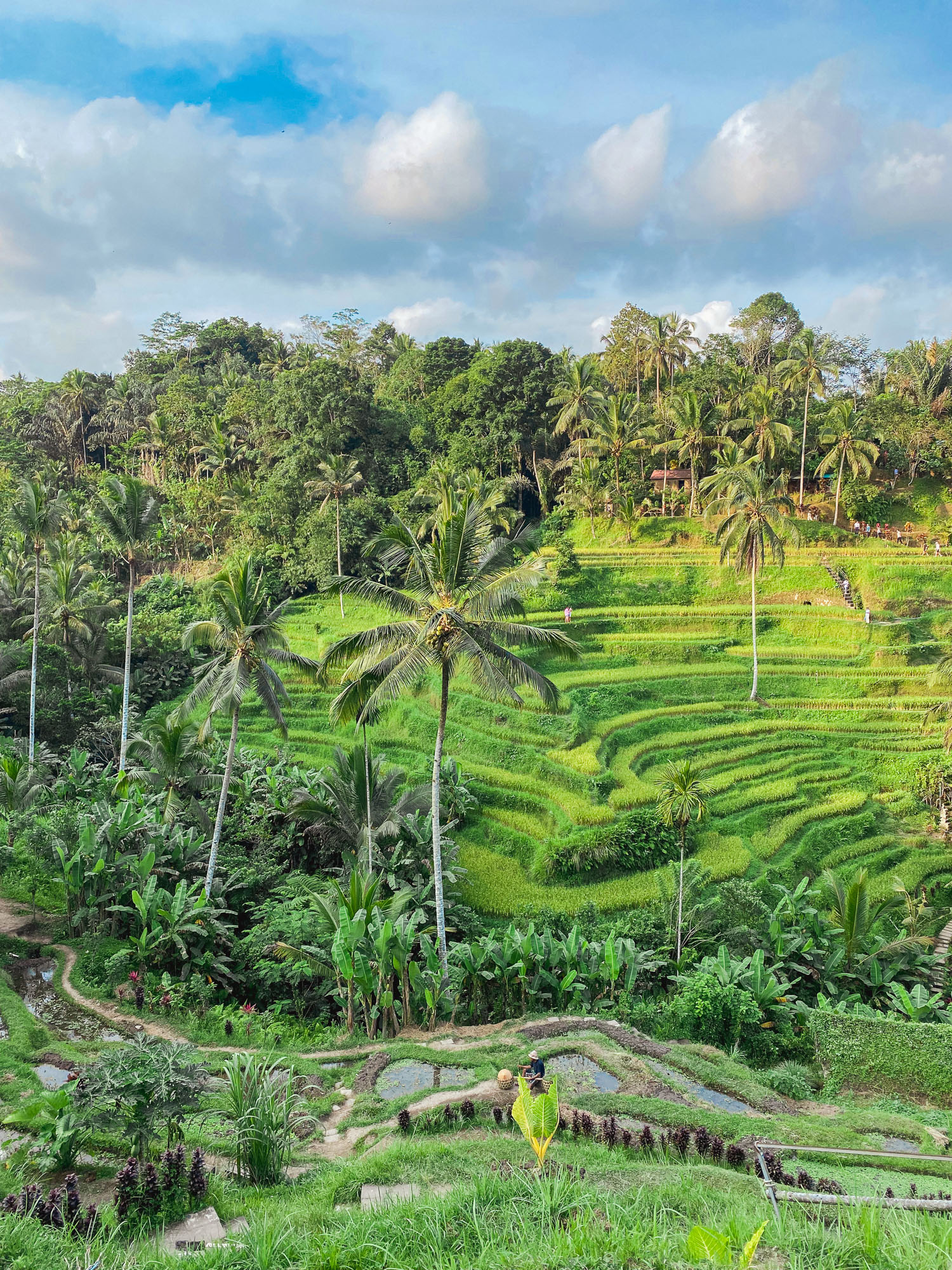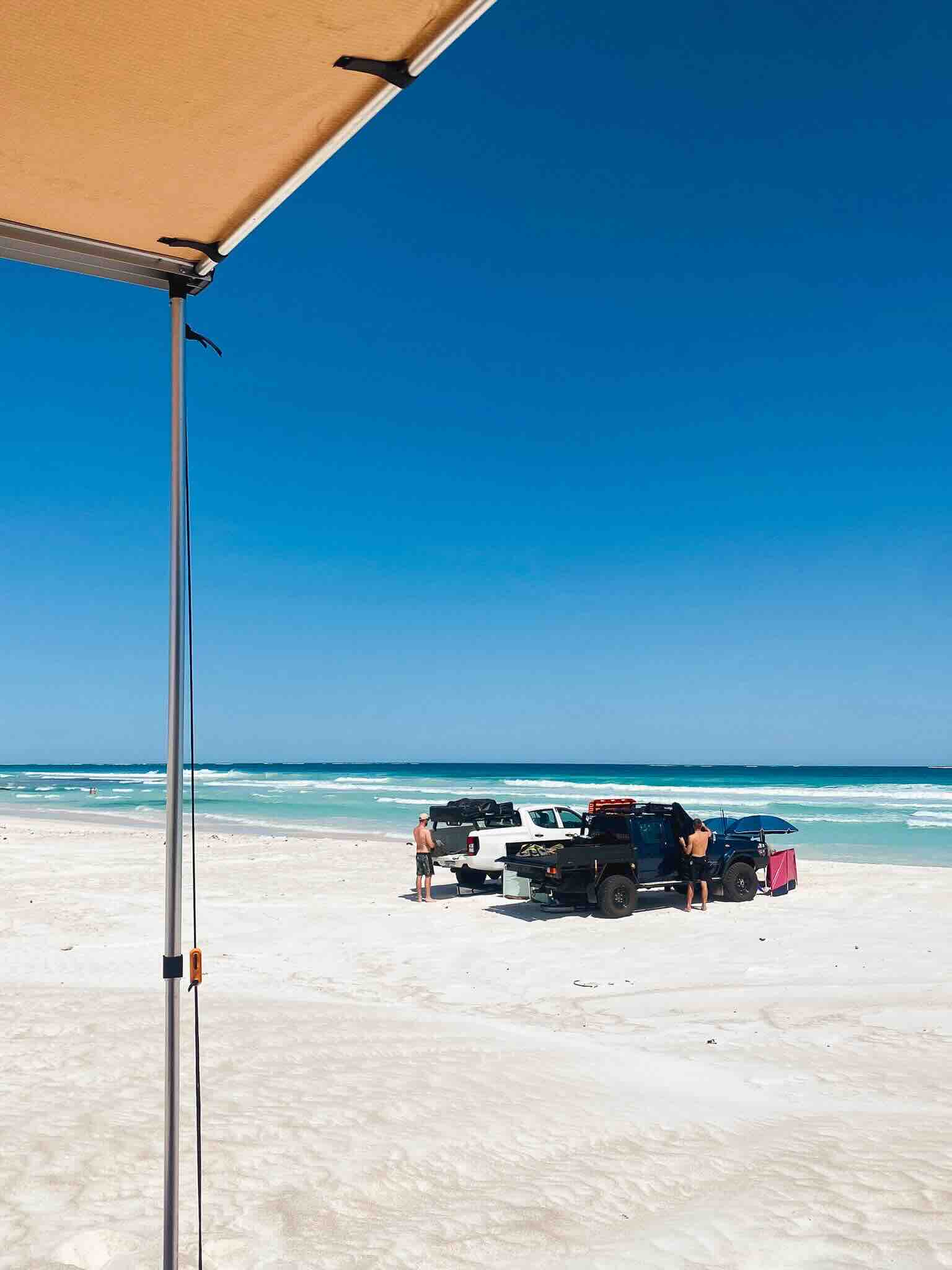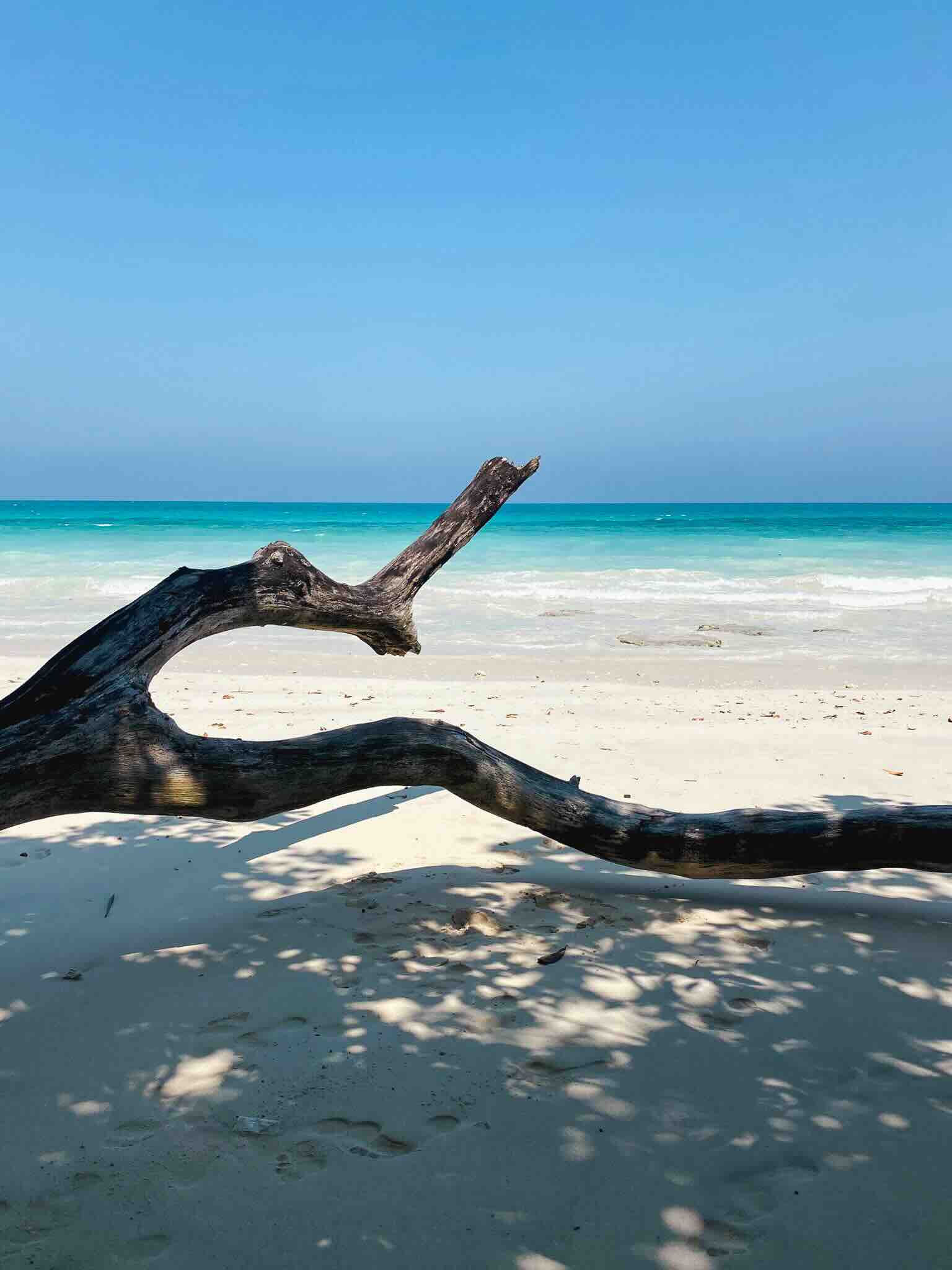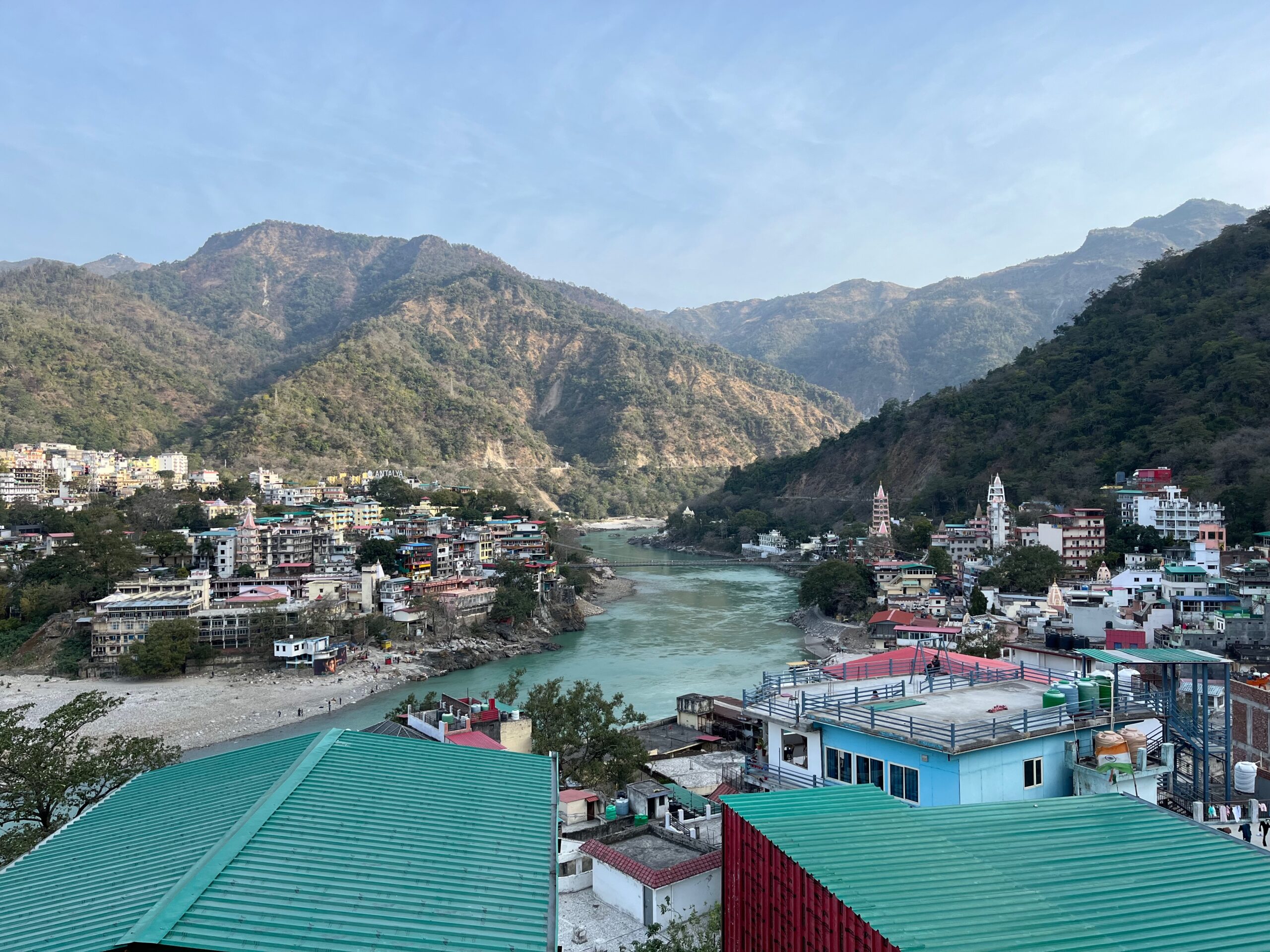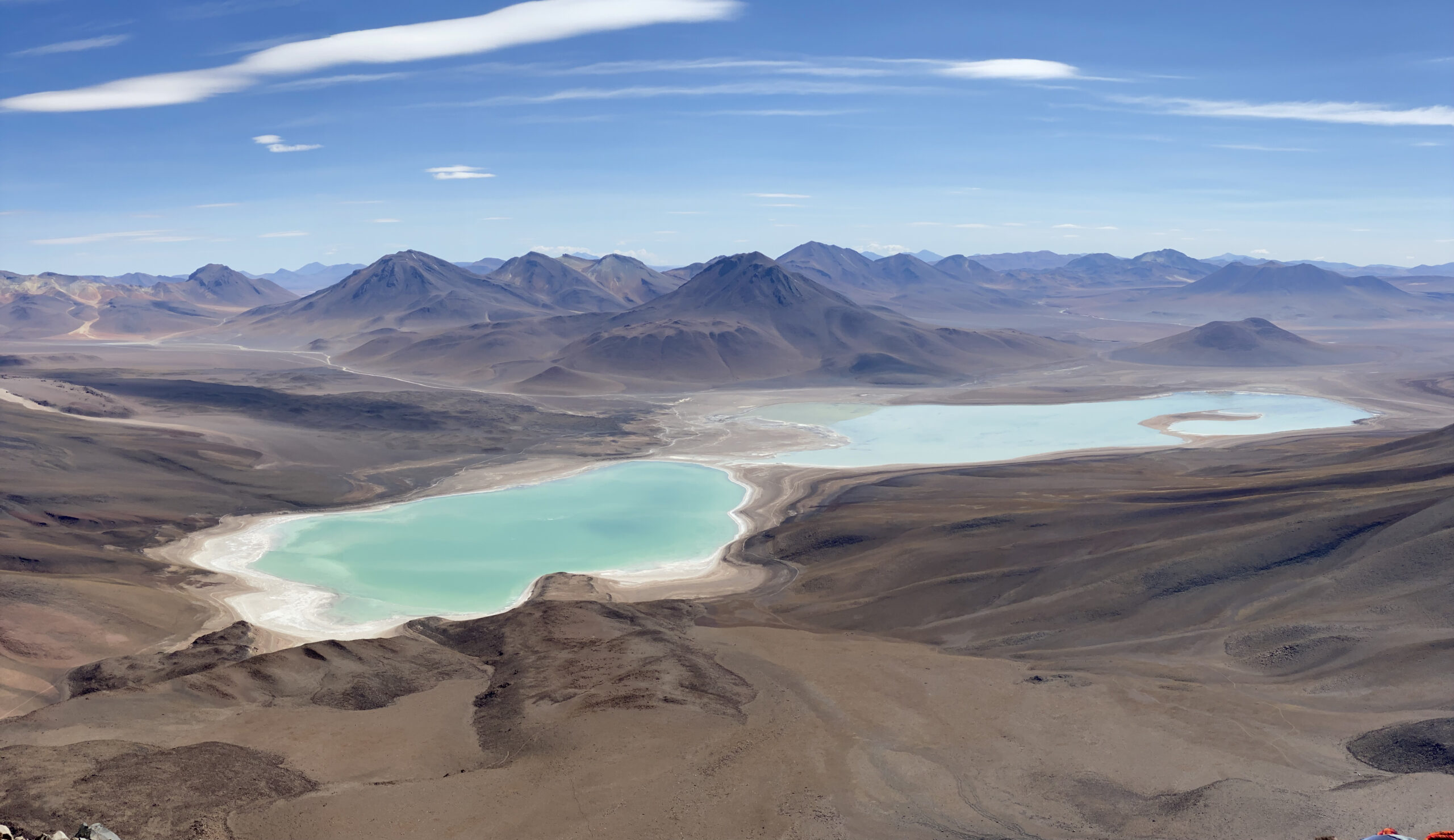The Three Passes Trek in Nepal is a challenging yet unforgettable adventure that takes you through some of the most spectacular landscapes in the country, including the famous Everest Base Camp, the Cho La Pass, and the Gokyo Valley. Whether you are an experienced trekker or a determined beginner, this guide is designed to help you navigate the Everest region with confidence.
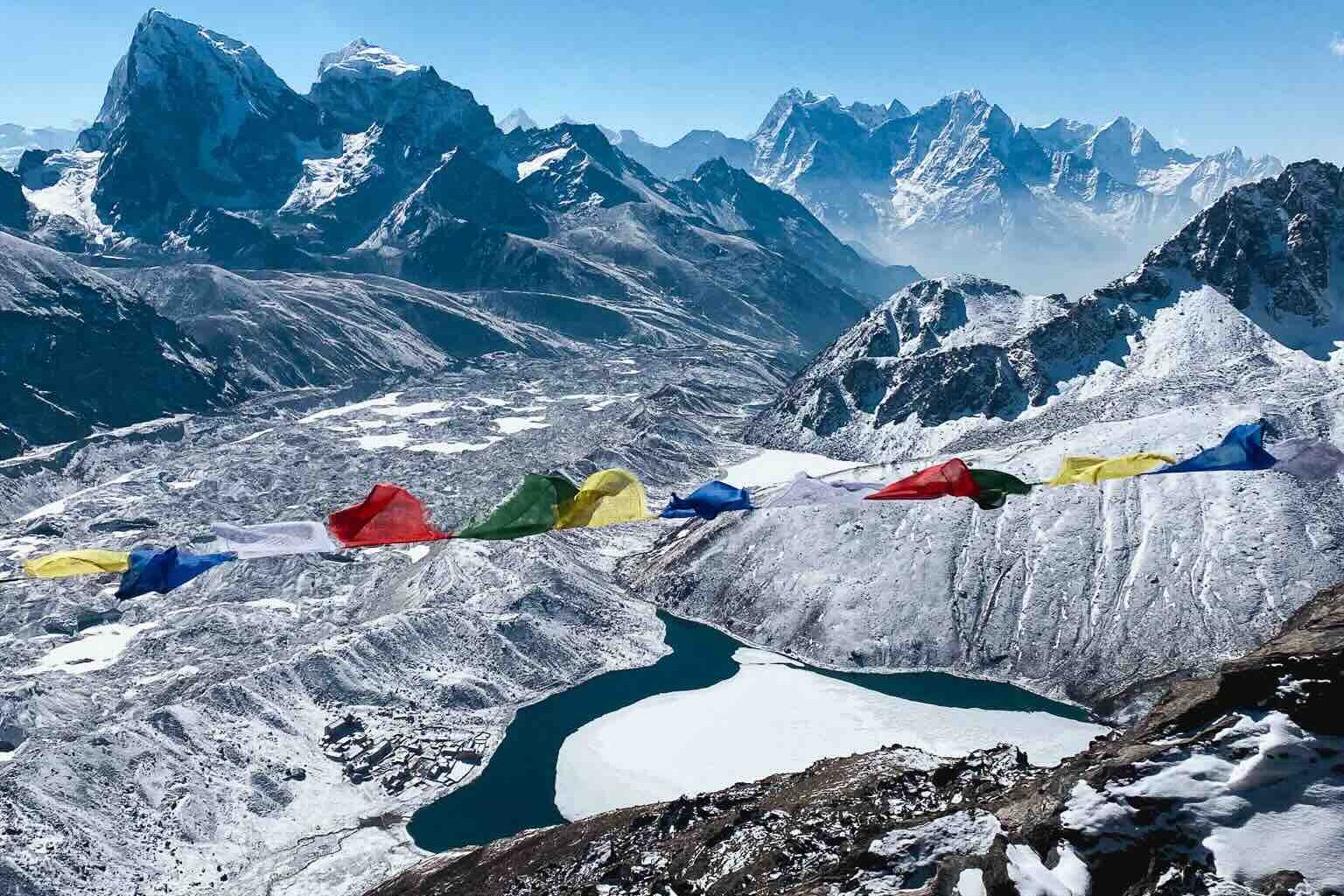
Best Season for the Three Passes Trek
The ideal periods to undertake the Three Passes Trek are in spring (March to May) and autumn (September to November), when the weather conditions are most favorable.
Duration of the Three Passes Trek
To complete the Three Passes Trek, plan for 14 to 17 days depending on your fitness level. Acclimatization days are necessary at several points to adjust to the altitude and avoid altitude sickness.
At Namche Bazar (3,440 m), two days of acclimatization are recommended. It’s also the perfect place to shop before prices rise. We spent one night in Namche Bazar and another in Khumjung (3,790 m) to vary our rest locations and continue our trek gradually.
At Dingboche (4,350 m), we took two days to acclimate, including a walk to Nangkartshang (5,040 m), where the altitude was strongly felt in our breath and with headaches. These acclimatization periods are essential and should never be underestimated to prevent complications later on.
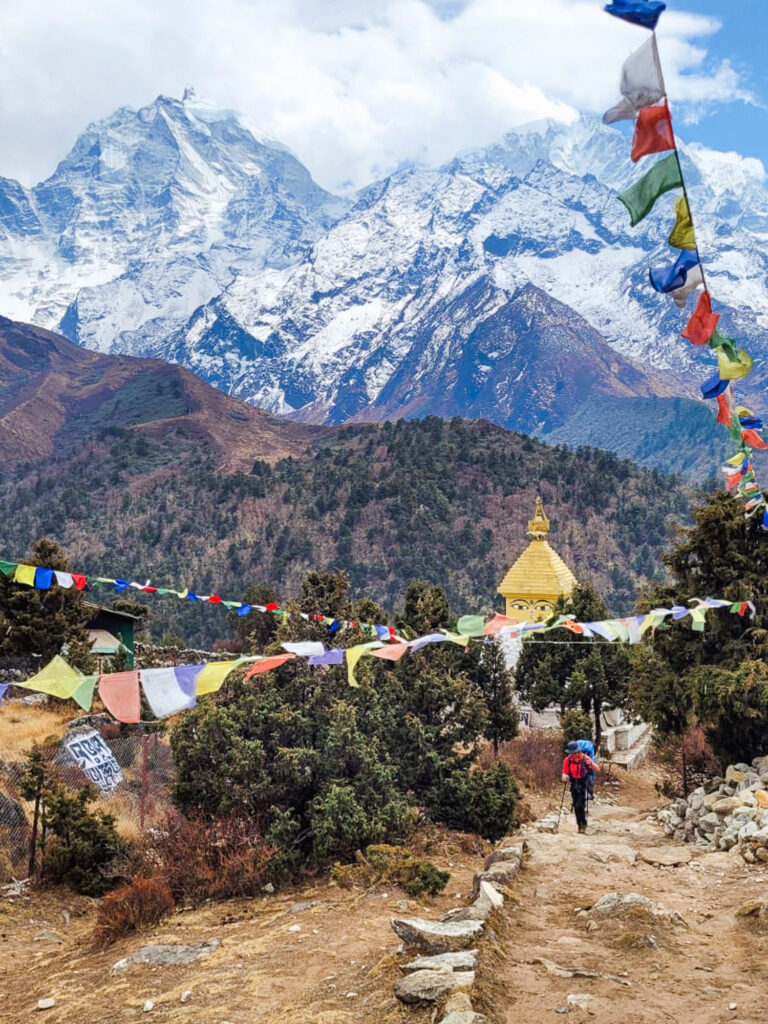

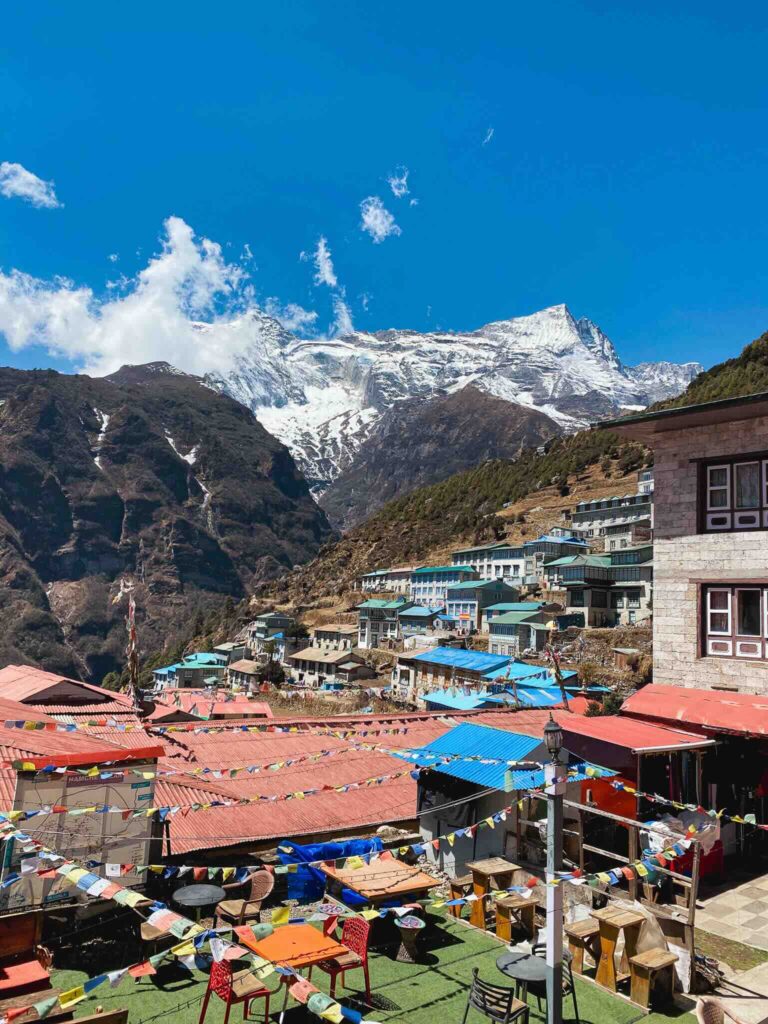
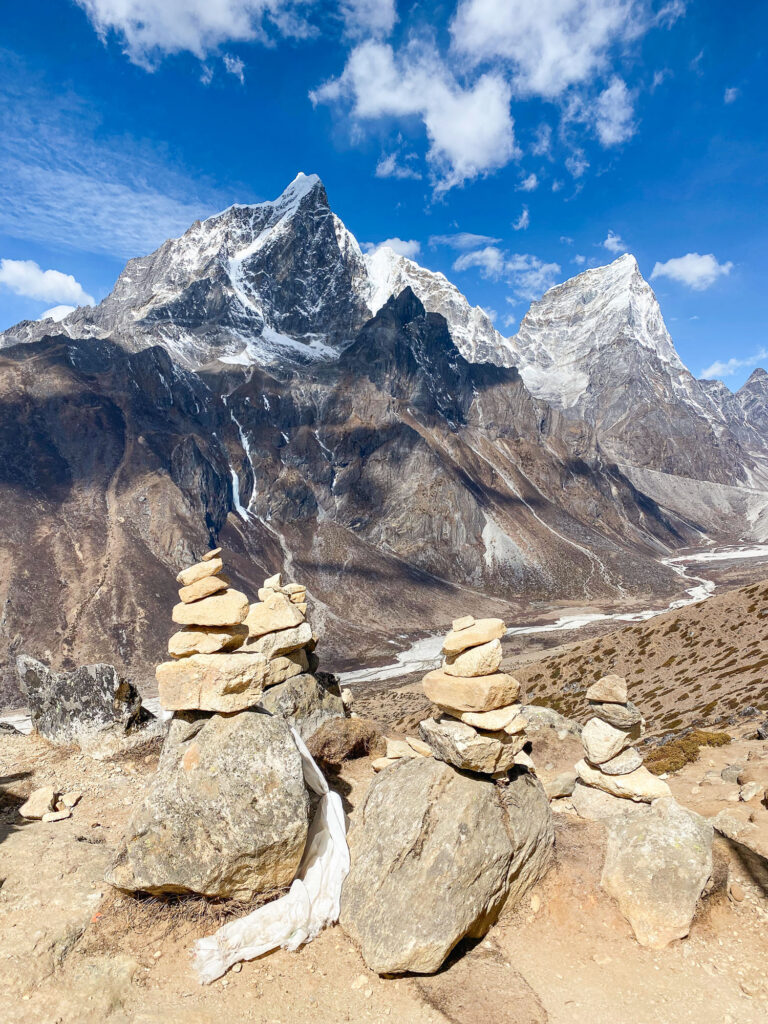
Going Solo or With a Guide?
It is recommended to hire a guide or porter for the Three Passes Trek, not only for navigation and safety, but also to enrich the experience through interactions with locals. The daily cost of a guide is around €25, while a porter costs about €22 per day.
Personally, I chose a guide because I wanted to manage my own gear, but I also wanted to share this adventure with a local. Thanks to a friend’s recommendation, I contacted the agency « Shalom trek » in Kathmandu, which took care of all the organization.
My guide, Ram, was truly wonderful and passionate about his work. He was always attentive and shared his knowledge throughout the trek. I returned from this adventure with memories full of warmth and a friend for life. Don’t hesitate to contact him on my behalf at +977 986-2841137 — you won’t be disappointed.
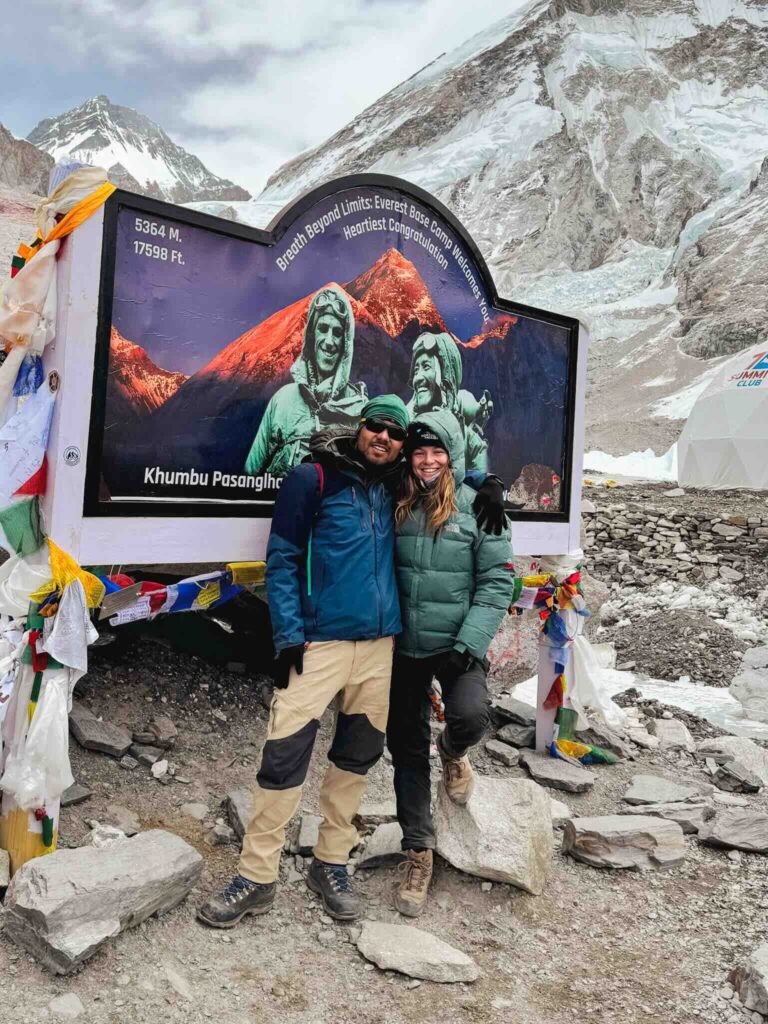
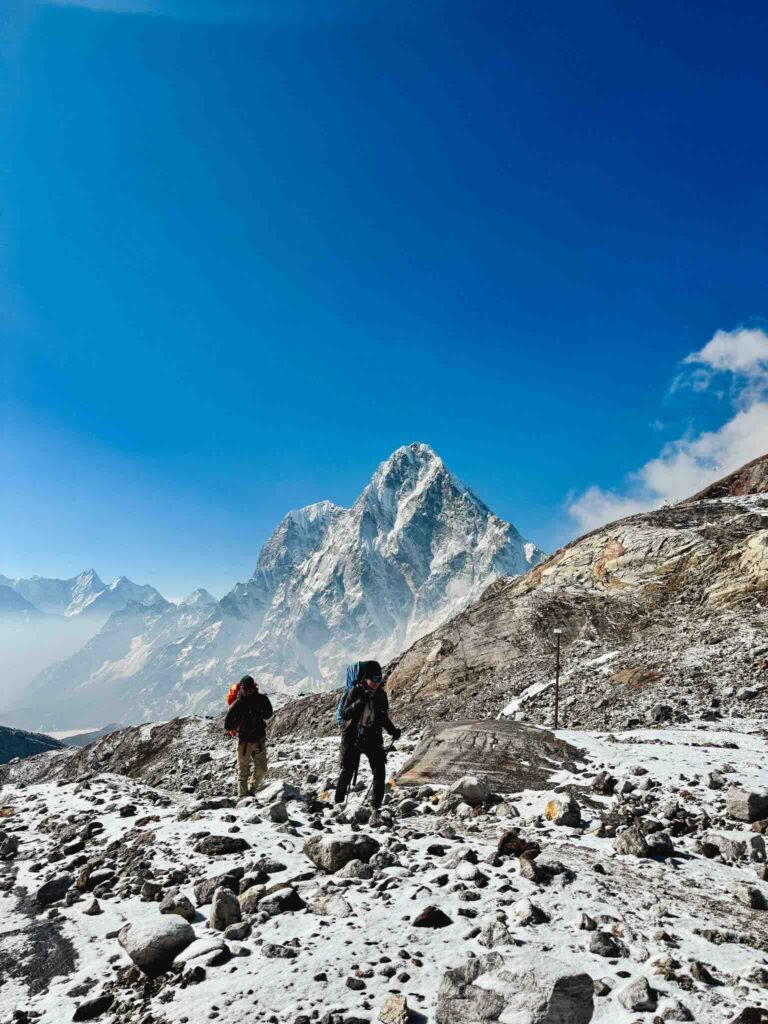
How Much Does It Cost?
The cost of the Three Passes Trek varies depending on several factors: having a guide, your mode of transport, and the duration of the trek. With a guide, the typical budget ranges between €1,100 and €1,500.
Included in the price:
- Transport: Around €400 if you fly to Lukla, or approximately €100 round-trip by road.
- Trek permits: Around €30.
- National park entrance fees: About €15.
- Food/Lodging: Roughly €35 per day, which comes to about €560 for 16 days of trekking.
- Guide or porter: A guide costs about €25 per day, a porter about €22 per day. In my case, it was around €400for 16 days with a guide.
- Rental gear (sleeping bag, trekking poles, crampons): Around €20 for the entire trek.
- Purchasing trekking equipment: I bought almost everything locally for about €200.
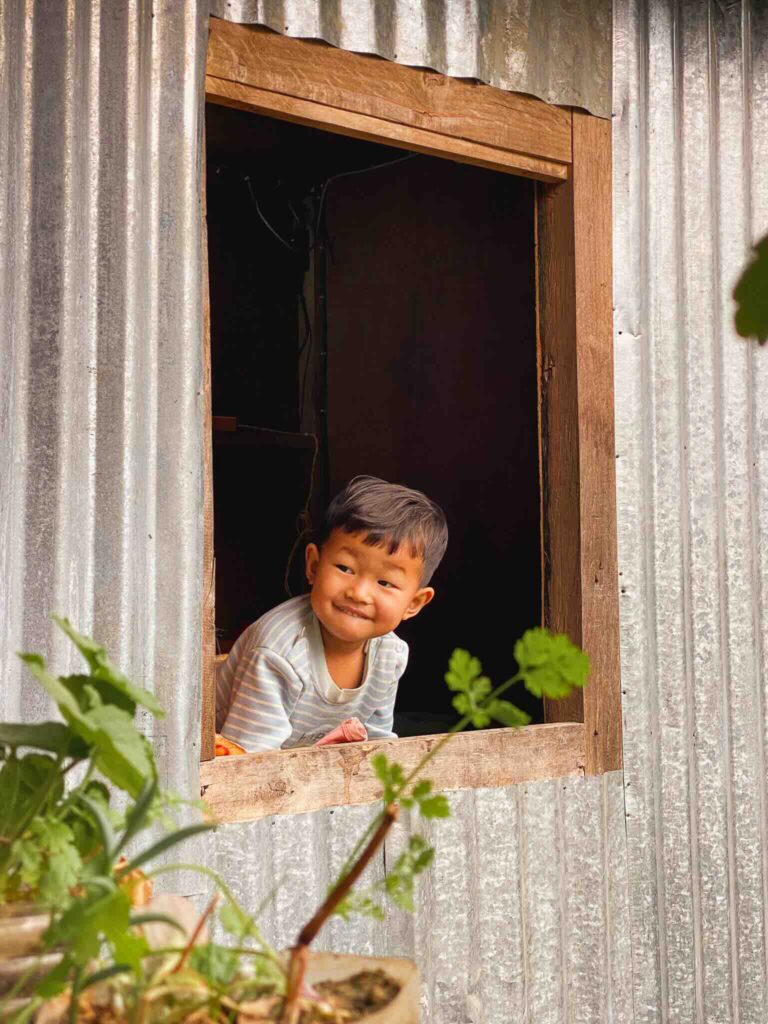
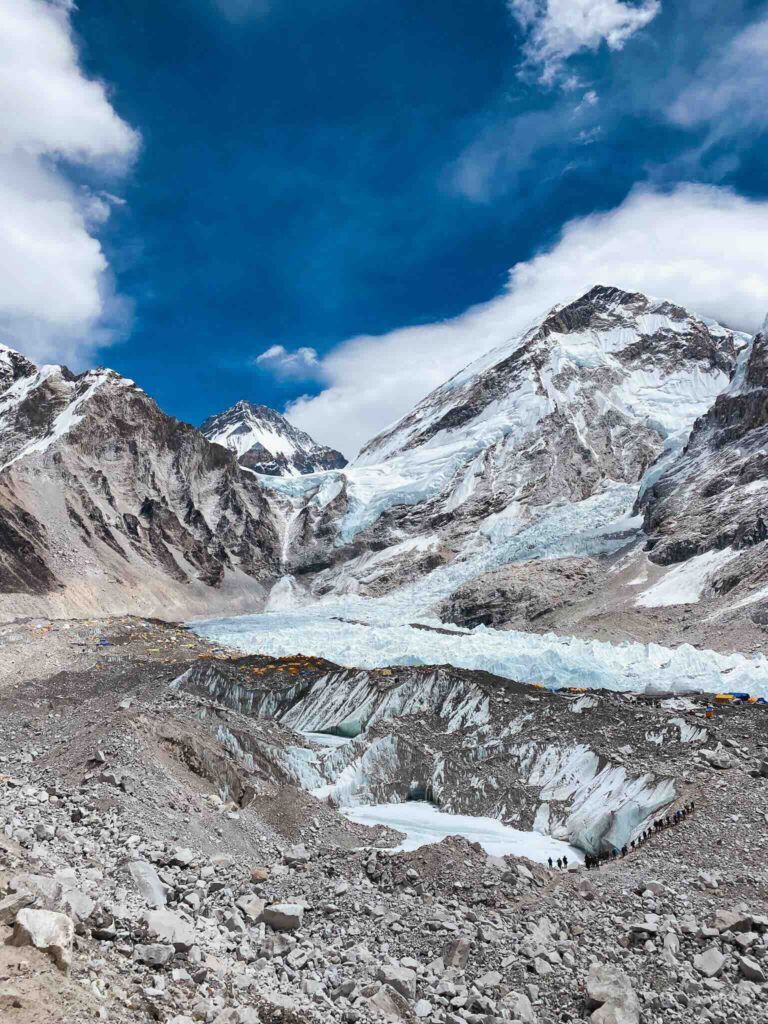
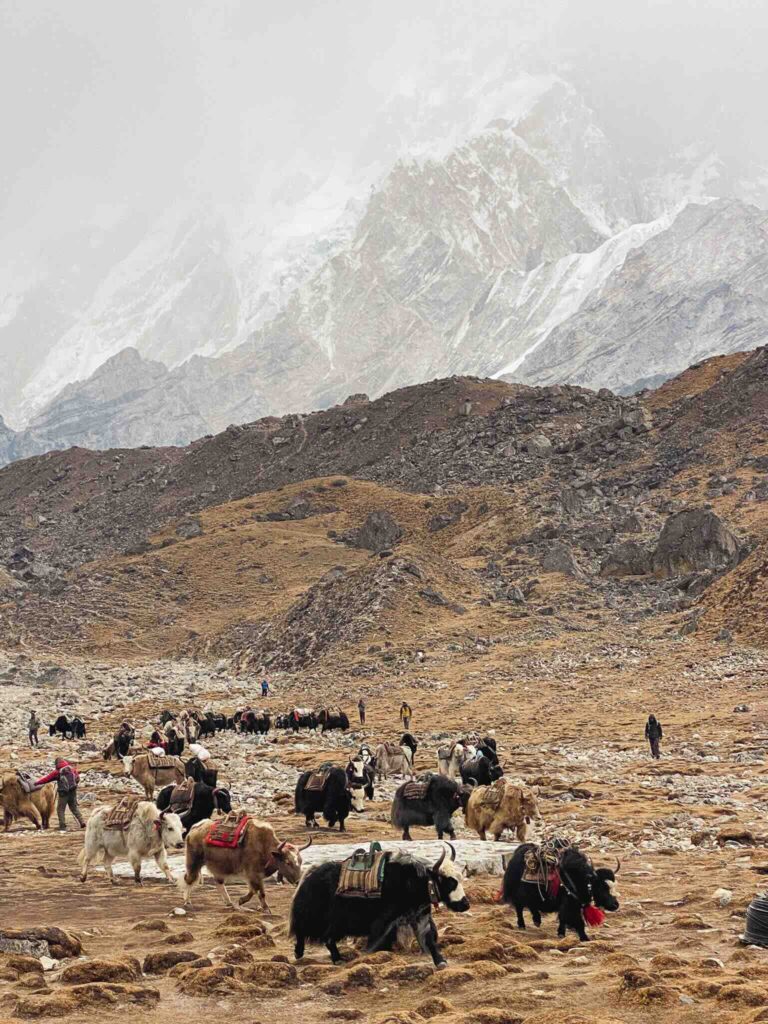
Where to Sleep During the Trek?
Throughout the Three Passes Trek, you will find lodges, also called tea houses, in every village. These accommodations are simple but cozy, offering private or shared rooms and a heated common area. They also provide a menu with hot meals, perfect for recharging your energy after a day of trekking. Some lodges also offer showers (often cold, or with hot water for an extra fee) and charging stations for electronic devices—though these are usually paid at high altitude.
Honestly, I was pleasantly surprised by the comfort and warm welcome at these lodges, far beyond what I expected for a high-altitude trek.
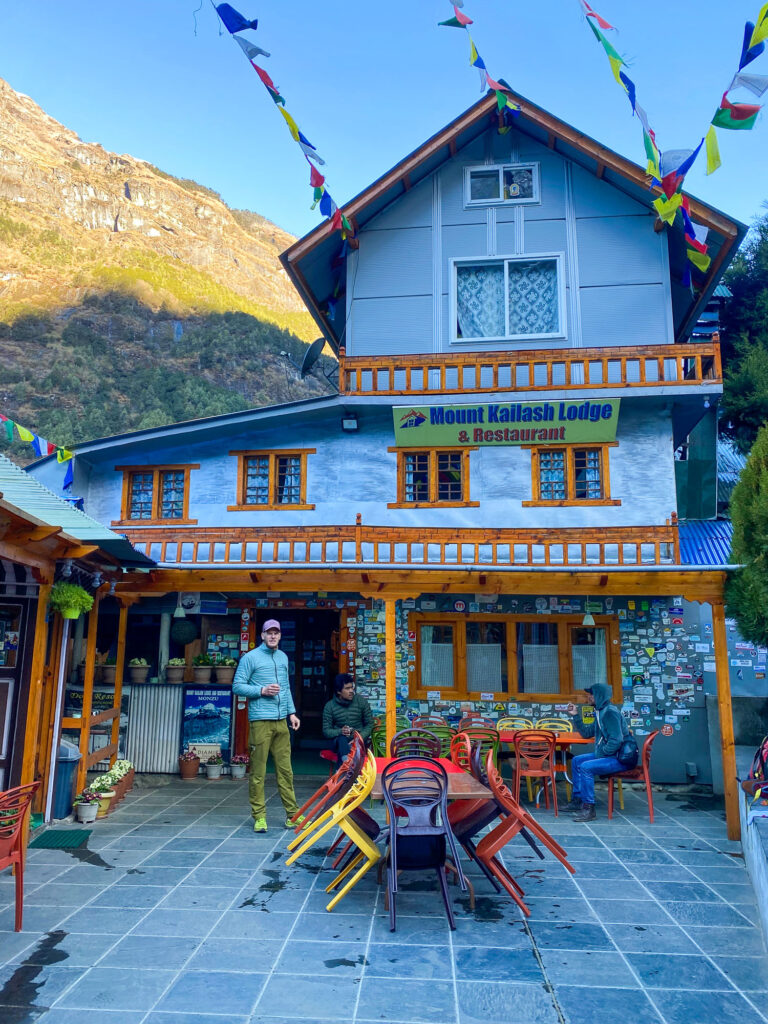
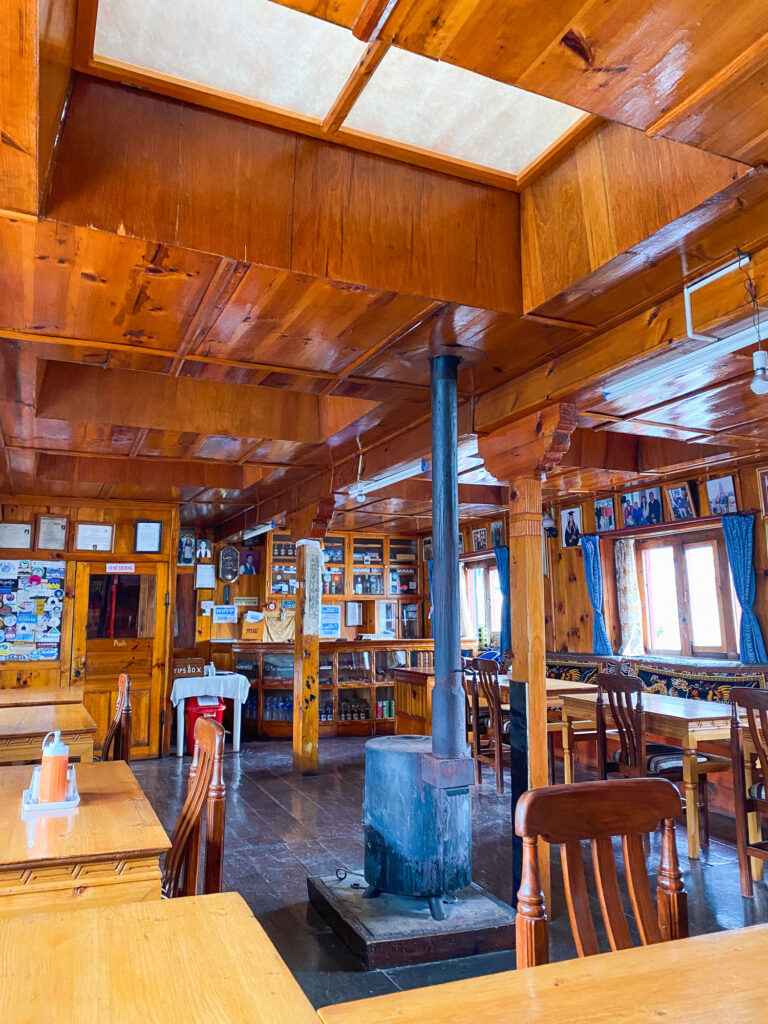

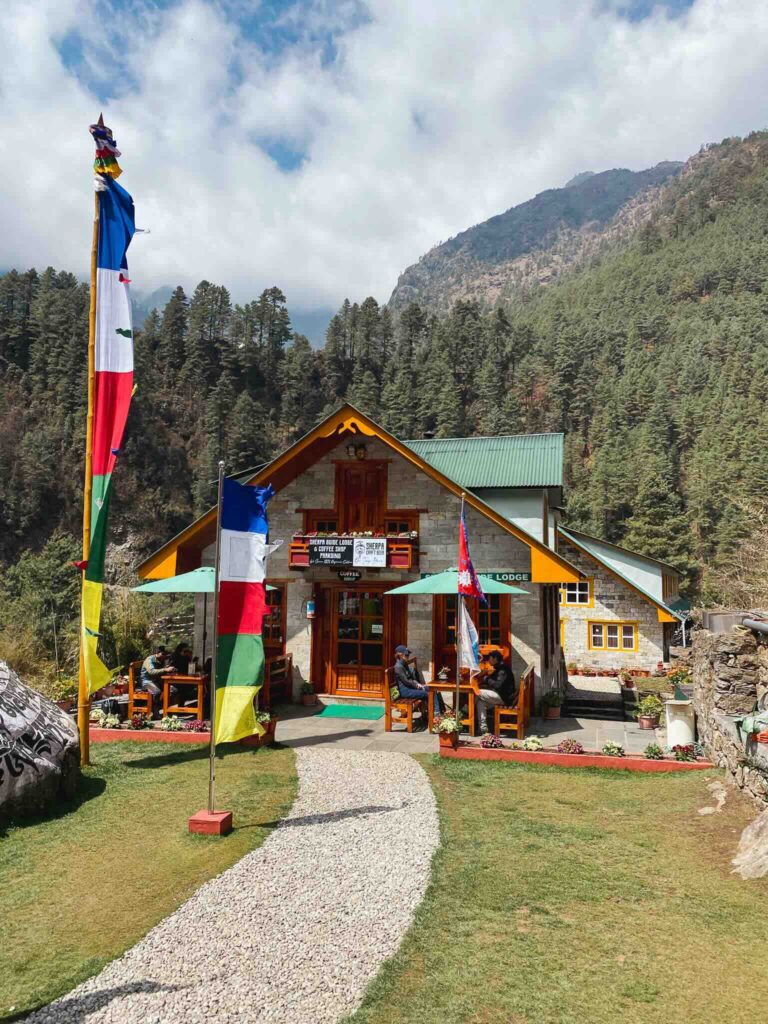
Essential Gear and Preparation for the Three Passes Trek
Kathmandu offers numerous shops where you can equip yourself with all the necessary trekking gear at reasonable prices. You can either buy everything on-site or arrive with your own equipment.
Essential items to bring:
- Thermal clothing for chilly evenings
- One or more lightweight trekking pants and several long-sleeve t-shirts
- A fleece jacket
- A Gore-Tex jacket and a -20°C down jacket
- Trekking socks and an extra warm pair for the evenings
- Hiking boots (preferably high-cut), crampons, and gaiters
- A sleeping bag suitable for temperatures down to -20°C
- Trekking poles
- A hat, beanie, and neck gaiter
- Light gloves and thicker gloves
- Sunglasses
- A microfiber towel
- Talcum powder (for feet when sweating or as a dry shampoo—very useful when you only get 3 showers in 16 days)
- Wet wipes or a small washcloth
- A good-quality backpack with rain cover
- A water bottle with purification tablets and/or a filtered bottle
- A power bank (or ideally solar panels) for charging electronics
- A headlamp
- A first aid kit (paracetamol, antispasmodics, Vogalib, Imodium, bandages, Diamox…)
- Magnesium sachets to add to water (to aid hydration)
- Coffee or tea sachets and snacks – these can save money at high altitude (where prices increase) and provide small, comforting rewards after the effort – and believe me, a Snickers at 5000m tastes incredible!
Additional info: Equipment can also be rented in Kathmandu. For my trek, I rented a -20°C sleeping bag (100 NPR/day), trekking poles (500 NPR for the period), and crampons (500 NPR for the period), totaling around €25 for the entire trek.


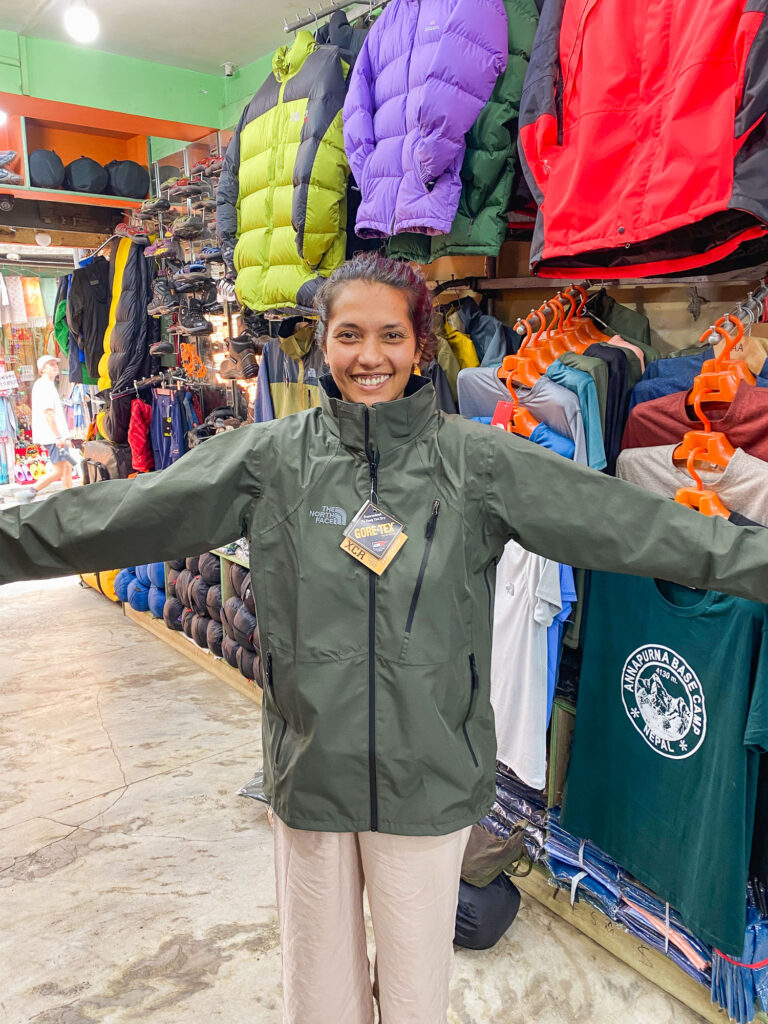
Getting to Lukla: The Gateway to Everest
The journey to Lukla, the starting point of the trek, can be undertaken in two main ways:
- By plane: A fast option but often unpredictable due to weather conditions. Flights only depart if visibility is good, given the dangerous landing at Lukla Airport, considered one of the most dangerous airports in the world. Flights from Kathmandu cost around €200. Alternatively, you can fly from Ramechhap, which involves 4 hours by jeep from Kathmandu to the airport for about €20, followed by a flight costing €170.
- By road: A more reliable but longer option is to take a jeep to Phaphlu, spend the night there, and continue to Puyiathe next day. This journey takes about 15 hours but allows you to experience the rural landscapes of Nepal in depth. Due to bad weather and multiple flight cancellations, we opted for this overland route.
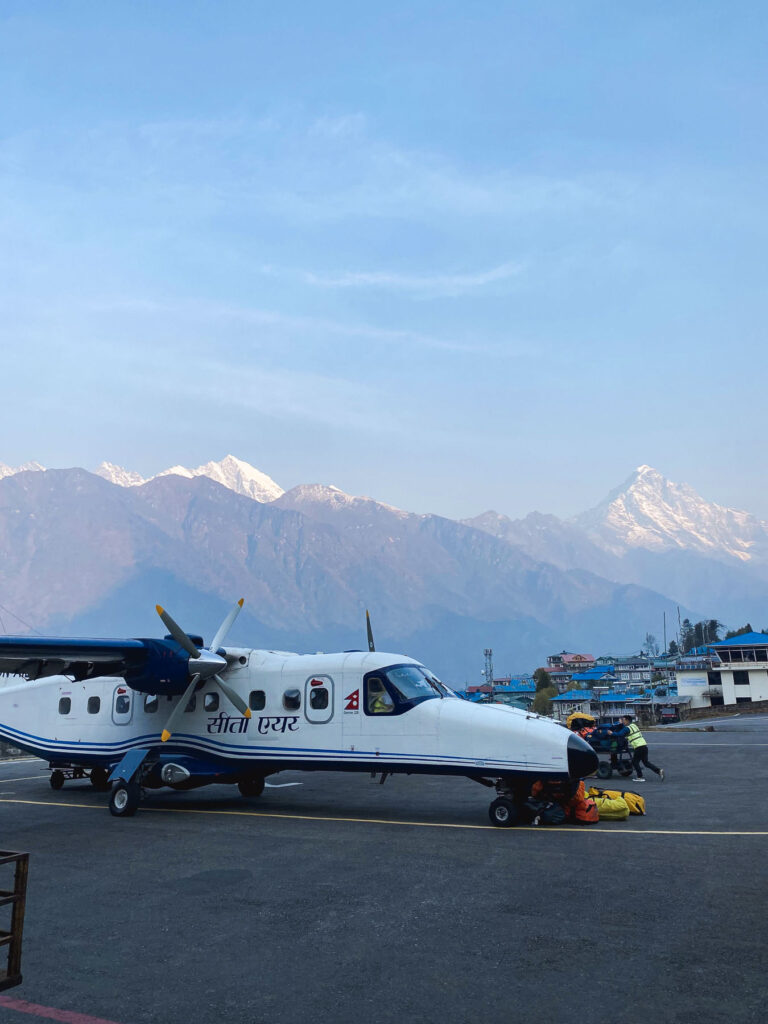
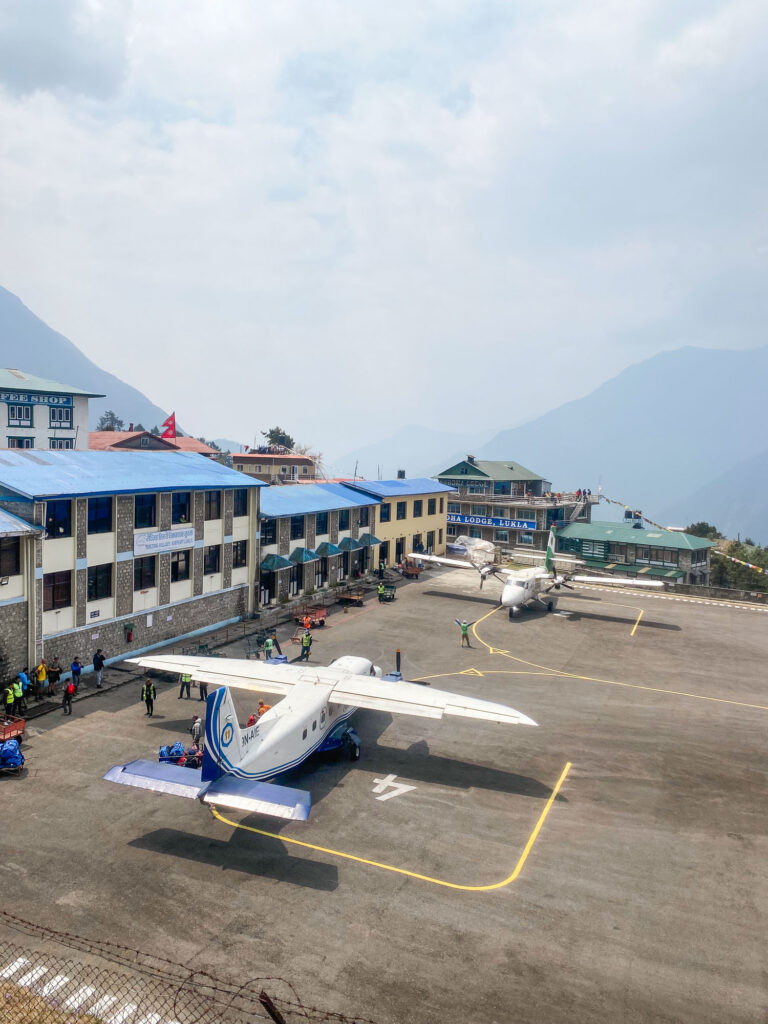
Detailed Itinerary for the Three Passes Trek
In our case, taking a flight on the way in wasn’t possible due to unfavorable weather conditions. Therefore, we had to take a two-stage jeep journey from Ramechhap, and we started the trek from Puyia instead of Lukla.
Our route was as follows:
- From Ramechhap to Puyia, with an overnight stay in Phaplu and a walk to Surke on the second day.
- From Surke to Monjo.
- From Monjo to Namche Bazaar.
- From Namche to Khumjung.
- From Khumjung to Pangboche.
- From Pangboche to Dingboche.
- Acclimatization day in Dingboche.
- From Dingboche to Lobuche.
- From Lobuche to Gorakshep and a visit to Everest Base Camp.
- Climb to Kalapatthar and return to Lobuche.
- From Lobuche to Dzongla via Cho La Pass.
- From Dzongla to Gokyo via Dragnag.
- From Gokyo to Dole via Machermo.
- From Dole to Namche.
- From Namche to Monjo.
- From Monjo to Lukla.
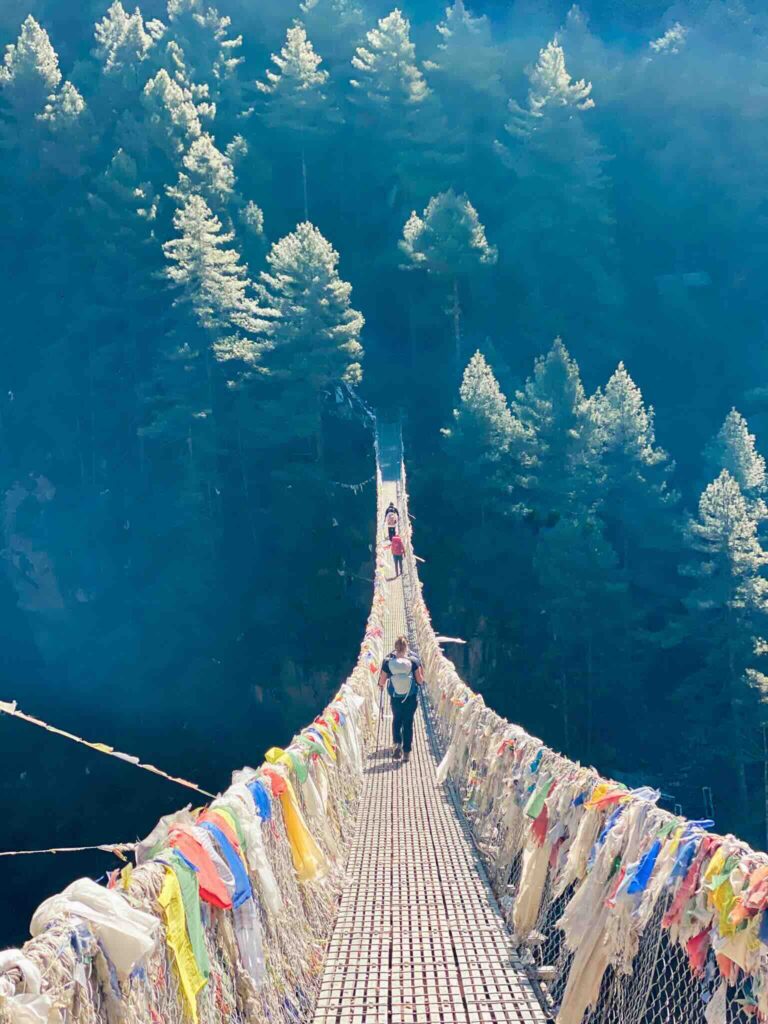
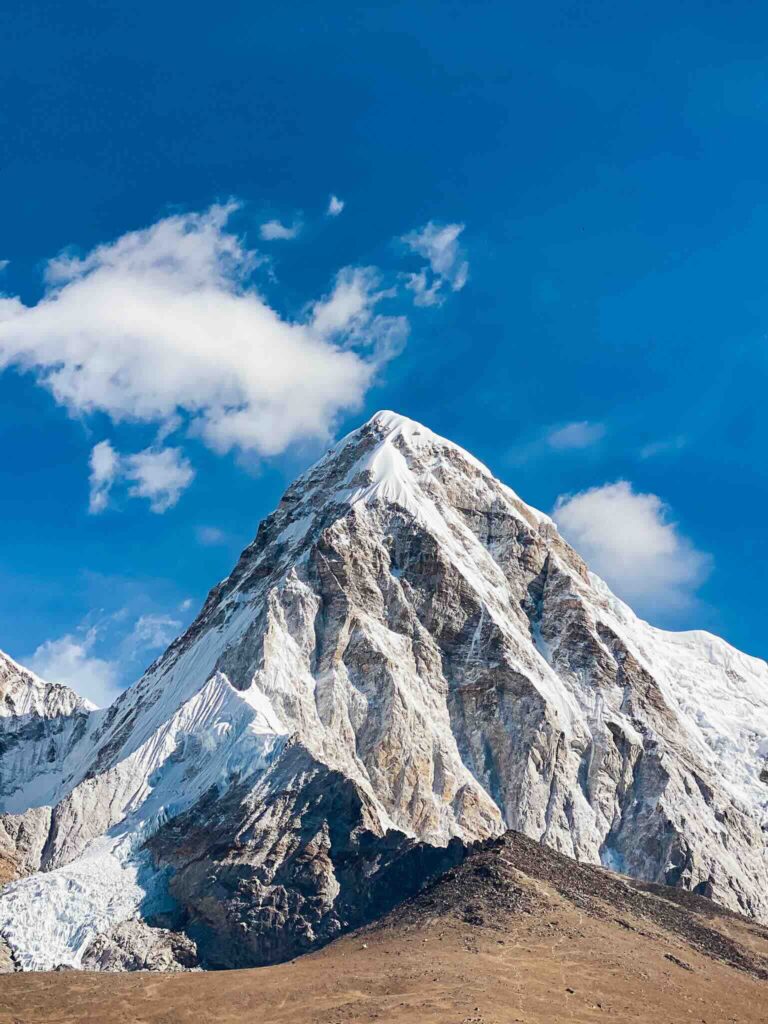

We were only able to complete one of the three originally planned passes: Cho La Pass (5,420m). According to my guide, the ascent of Kongma La (5,535m) would have required about two additional days of trekking with increased difficulty, without any guarantee of added value. For the final pass, Ranjo La (5,465m), we had to skip it due to time constraints. With our return flights scheduled from Kathmandu, we preferred to keep a margin of one or two days in case weather conditions affected our departure plans.
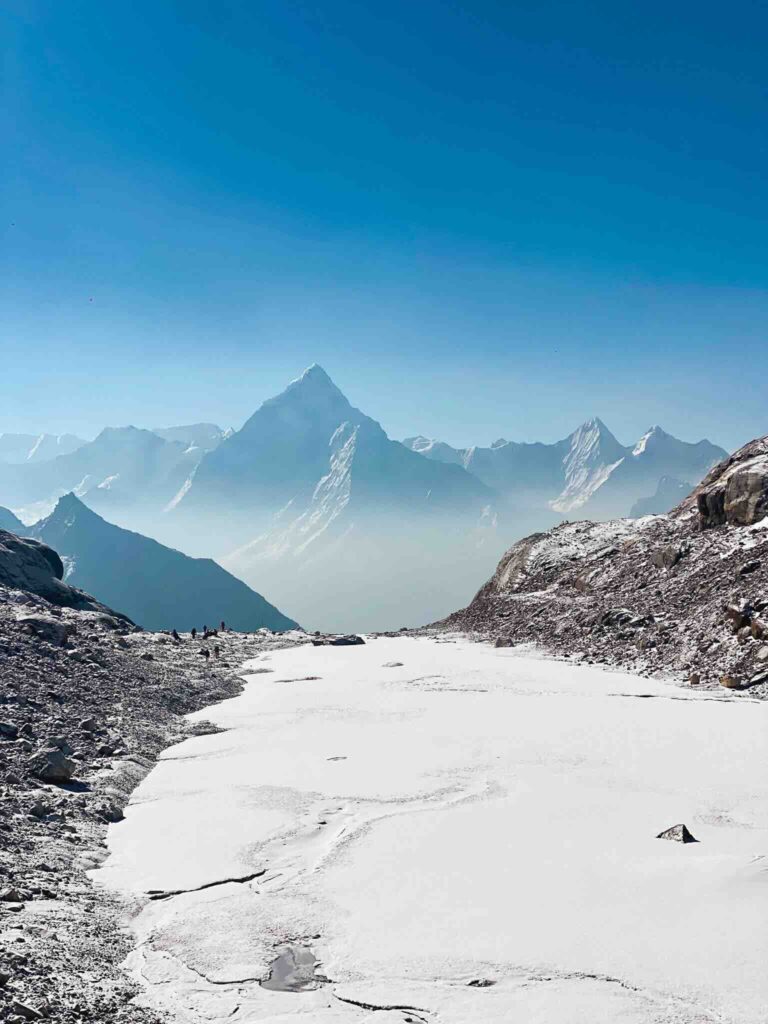
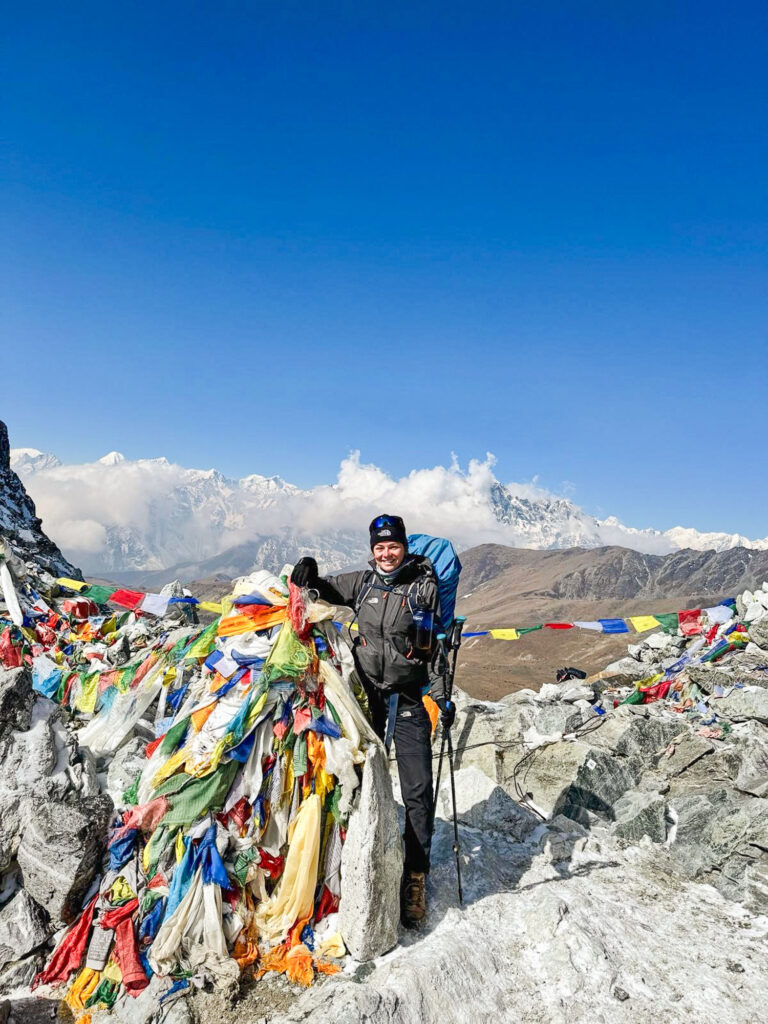
Practical Tips for the Trek
- Costs: The higher you go in altitude, the more expensive things become. Charging electronic devices can cost up to €10, and hot showers are rare, though available in some lodges for an additional fee.
- Health and Safety: It is essential to take all necessary precautions in the mountains. Always carry medications for altitude sickness, such as Diamox, and make sure to stay properly hydrated. Additionally, travel insurance is a mustin case of any emergency. Keep in mind that rescue access in this region is only possible by helicopter, which can result in high costs. Check your insurance carefully, as some policies do not cover above certain altitudes.
- Equipment and Backpack Weight: Traveling light is crucial, even if it’s not easy with all the gear needed for cold and high-altitude conditions. Only pack the essentials: there’s no need for a clean t-shirt every day—you’ll have to make do with less and accept being less comfortable than at lower altitudes. My backpack weighed 14 kg, and that was already plenty!
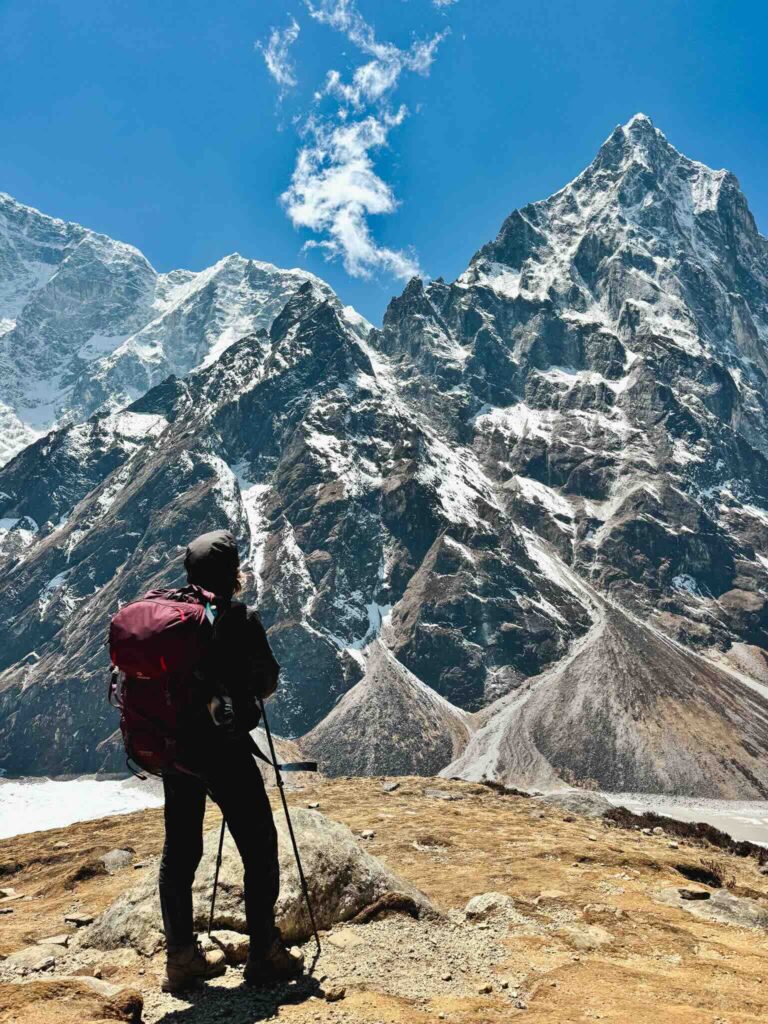
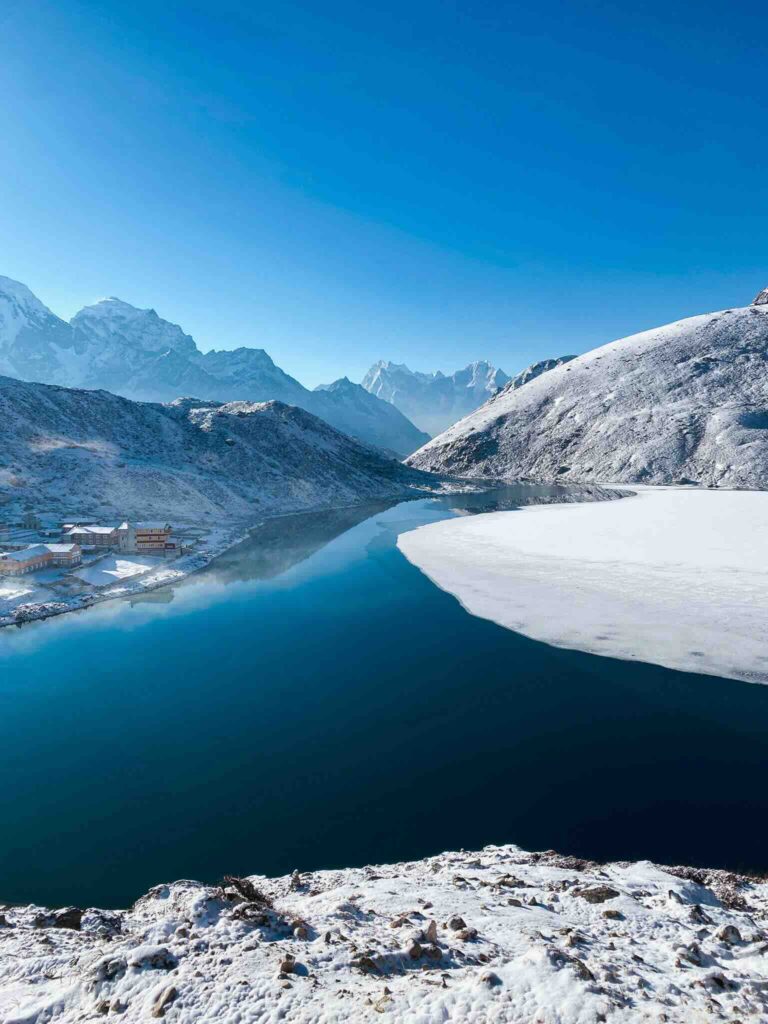
Sending Gear Back to France
After my trip to Nepal and before continuing my adventure in Australia, I decided to lighten my luggage by sending some belongings back to France. I used On Time Cargo & Courrier, a simple and efficient option. Sending my 8 kg package cost about €80, and it arrived in perfect condition three weeks later. Throughout the process, I could rely on the responsiveness and helpfulness of the manager. This is an ideal solution if, like me, you don’t want to part with some items but cannot bring them back yourself.
Conclusion
The Three Passes Trek offers much more than a simple hike: it’s an intense experience, a physical and mental challenge that tests your endurance and determination. Walking days can range from 3 to 8 hours, requiring good physical condition, but the effort is well worth it.
If you are athletic and drawn to the Everest region, go for it—you will come back transformed. For me, this trek remains one of the most memorable adventures of my life. Between the breathtaking landscapes, the unforgettable encounters, and the satisfaction of pushing my limits, every moment was worth it. The sunrise ascent of Kala Patthar (5,643 m) and the climb of Gokyo Ri (5,357 m) are moments that will stay engraved in my memory forever.
A timeless journey, leaving you with only one desire when it’s over: to go back!
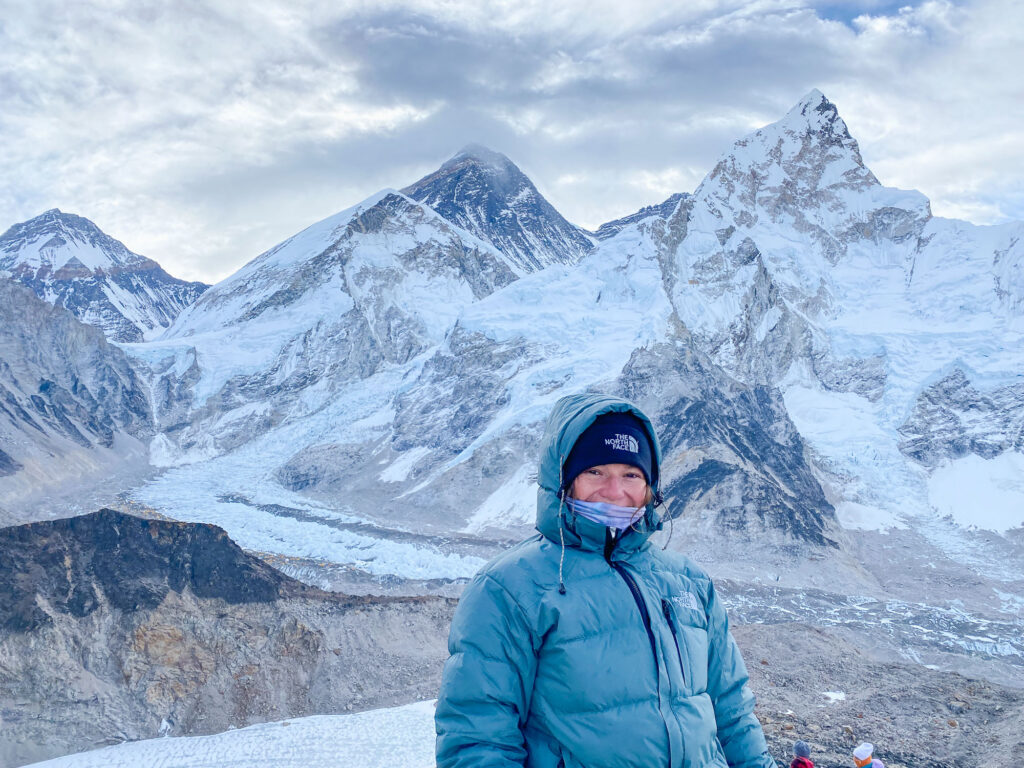
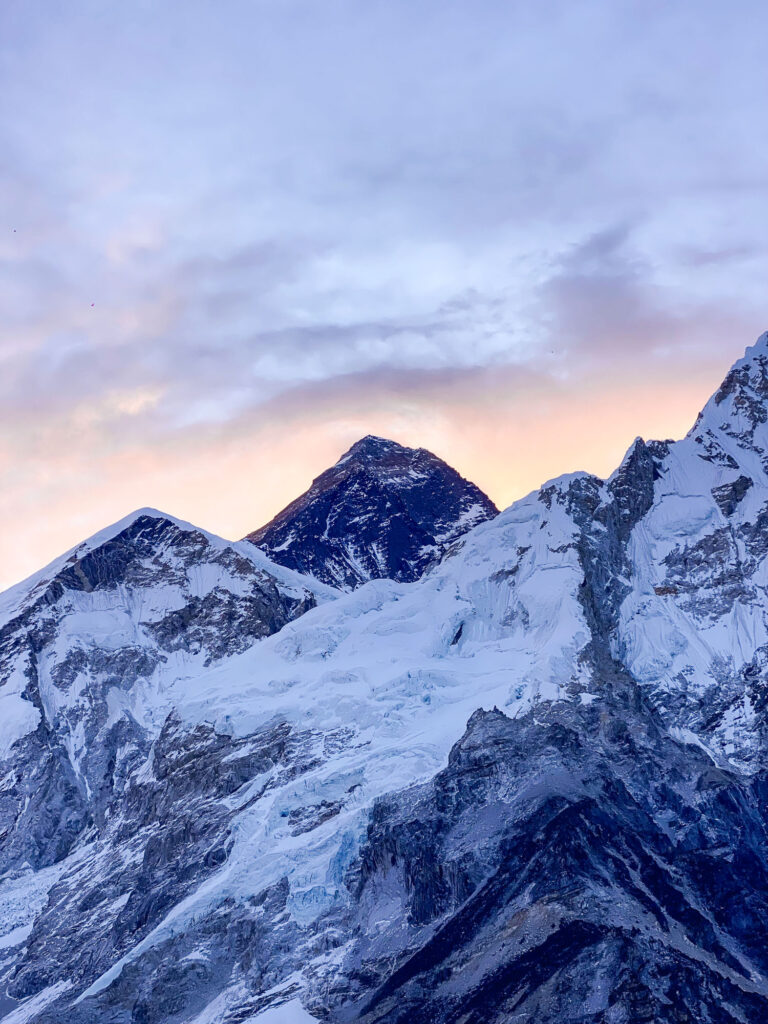
Manon – Trip Completed in March 2024

